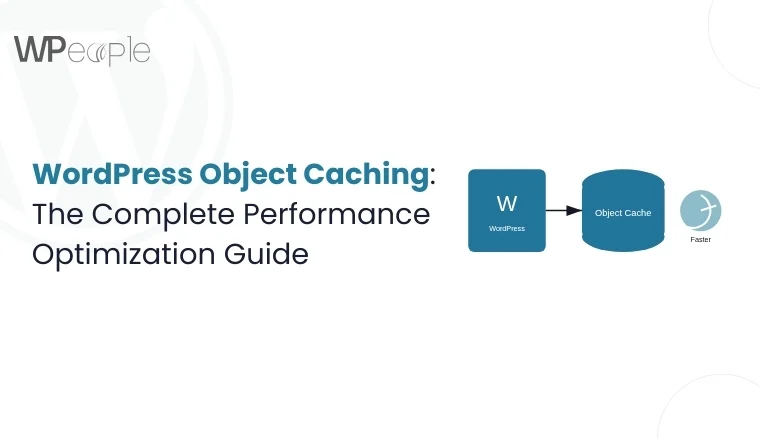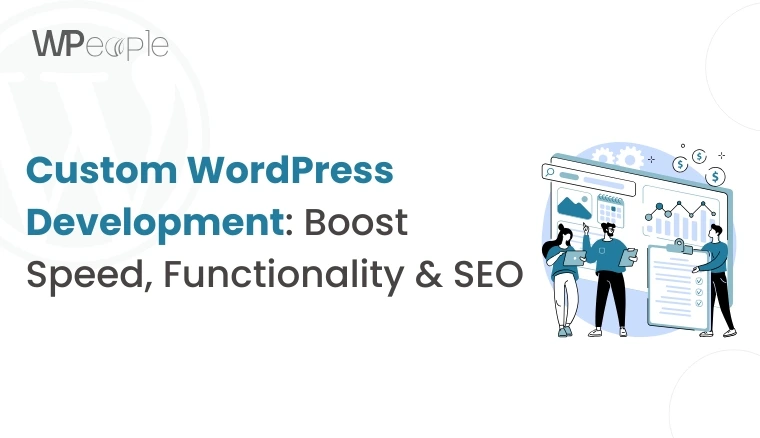If your WordPress website is taking 3, 5, or more seconds to load, you are shutting the door on thousands of dollars in sales.
Sites that load within 2.4 seconds achieve nearly a 2% conversion rate. Learn how to improve LCP performance for optimal results. Every one-second delay can cut conversion rate by 7 percent, and even a two-second delay increases bounce rates by almost 100%. Research also shows that 80 percent of shoppers avoid returning to websites that suffer from poor performance.
For growing online stores and service businesses in competitive markets, this performance gap is a silent killer.
So, what makes your website sluggish while others race ahead? The answer often lies in how efficiently your site stores and retrieves information. Hidden beneath themes and plugins is a powerful mechanism many businesses overlook: WordPress object caching.
In this blog, we will explore how WordPress object caching can transform slow websites into fast, growth-friendly, and profitable digital platforms.
This guide is built for business owners, developers, and decision-makers, revealing how object caching works, why it matters, and how to implement it strategically with proven methods, real case studies, and WPeople’s expertise.
So, let’s get started.
What Is Object Caching In WordPress? (Beyond The Basics)
Imagine a busy restaurant scenario: Every time a customer places an order, the chef has to run to the market to fetch the ingredients. Service would be painfully slow. Instead, kitchens keep essential items prepared and ready, ensuring quick delivery and happy customers.
WordPress works similarly.
- Without object caching, it queries the database repeatedly for the same information.
- With object caching, WordPress preserves frequently requested data in memory.
It ensures your website can serve content quickly without constantly asking the database.
So, what does object cache do in WordPress? In layperson terms, it reduces the number of times your website must run heavy database queries by temporarily storing results in memory. It allows faster content delivery and less server strain.
There are several types of WordPress caching:
- Page caching: Stores complete HTML pages for rapid delivery.
- Object caching: Stores database query results for quick reuse.
- Database caching: Focuses on speeding up queries across sessions.
- Opcode caching: Stores precompiled PHP code to save processing time.
Compared to page caching, object caching provides speedier data access during dynamic website operations, making it crucial for e-commerce stores, membership sites, and large content platforms.
Persistent object caching goes one step further. It retains cached data even after page reloads, offering consistent performance gains.
Main Message: WordPress object caching reduces repeated database queries, improves website speed, and ensures smoother user experiences. It makes it paramount for e-commerce stores and dynamic platforms seeking long-term growth.
Why Persistent Object Caching Matters for Business
Persistent object caching is not just a technical adjustment; it is a growth lever for modern businesses. By reducing the number of repeated database calls, it boosts performance and improves scalability. It also ensures consistent website experiences.
Let’s discuss its significance and how it impacts your business operations.
Faster and More Growth-Friendly Sites
Persistent object caching keeps frequently requested data in memory across sessions. It means your site does not need to query the database repeatedly. The result is swifter load times, lower bounce rates, and higher capacity to manage traffic spikes.
Reduced Database Strain
Without caching, your database is forced to handle the same queries hundreds of times. Persistent caching frees up resources by minimizing repetitive requests, allowing your database to focus on critical, real-time interactions.
Proven Speed Benchmarks
Independent tests and WPeople’s client work show that websites using persistent object caching can significantly bolster site speed. Faster websites enjoy higher SEO rankings, increased engagement, and stronger trust from users.
When To Use Persistent Object Caching
This approach is highly valuable for:
- E-commerce stores with frequent cart or checkout interactions
- Membership websites with logged-in users
- SaaS platforms serving large volumes of data through third-party API integration
- Publishers with high traffic and complex queries
Essential Insight: Persistent object caching reduces database stress, boosts site speed benchmarks, and supports business scalability. It makes it crucial for e-commerce, SaaS, and publishers striving for sustainable growth.
The Real Cost Of Not Using Object Caching
Many WordPress website owners underestimate the impact of subpar performance. Slow sites are not just an inconvenience; they directly affect sales, search visibility, and customer loyalty. Without object caching, your database works arduously, your hosting bills skyrocket, and your visitors leave frustrated.
Let’s look at the hidden costs of ignoring object caching.
Heavier Database Workloads
When object caching is not enabled, WordPress executes the same queries repeatedly. It slows down page rendering and puts constant strain on your database. It leads to higher server resource consumption and possible downtime during peak hours.
Lost Revenue Opportunities
Conversion data shows that even a one-second delay in site load can decrease sales by almost 20 percent. For online stores, it means abandoned carts, reduced checkout completions, and direct revenue loss – issues solved by checkout optimization.
WPeople’s revenue impact estimation reveals just how much a business can lose annually due to delays as small as two seconds.
SEO Setbacks
Google prioritizes fast websites in its ranking algorithm. Sites that ignore object caching risk lower Core Web Vitals scores, reduce organic visibility, and decline search engine rankings. The correlation is clear: swifter websites enjoy more search traffic.
Must-Know Insight: Ignoring object caching increases server costs, hurts SEO rankings, and reduces conversions. Businesses across diverse industry verticals have proven that caching is not optional; it is necessary for growth and long-term profitability.
How Different Industries Can Benefit From Persistent Object Caching
Persistent object caching delivers measurable gains across industries. Its ability to reduce database load and accelerate content delivery translates into tangible results for businesses with diverse digital needs.
Here is how it benefits the following three industry verticals:
- E-commerce Brand: A store with professional WooCommerce development handling thousands of product pages and checkout requests can deliver quicker shopping experiences, lower abandoned carts, and increase completed transactions. With caching in place, conversion rates can rise by up to 20 percent and even more.
- SaaS Platform: Applications that count on frequent data requests from logged-in users can cut server overhead dramatically. By serving cached results instead of querying the database each time, SaaS companies can significantly reduce hosting costs while delivering exceptional user experiences.
- News Publisher: High-traffic publishers facing content-heavy pages and breaking news spikes can rely on caching to improve Core Web Vitals, secure better ad placements, and increase overall ad revenue through faster page delivery.
In a Nutshell: From e-commerce stores to SaaS platforms to publishers, persistent object caching creates quicker, leaner, and more profitable websites. E-commerce brands can substantially boost their conversion rates.
Deep Dive: How WordPress Object Caching Actually Works
Object caching might sound intimidating, but understanding how it functions is key to using it effectively. At its core, object caching in WordPress is a system that stores the results of complex operations in memory. They can be reused instantly when needed.
Let’s break this down accessibly.
WordPress Object Cache API
WordPress includes a built-in object cache API that developers can call through functions such as wp_cache_set() and wp_cache_get(). This API lets plugins and themes store data in memory temporarily, avoiding repeated database queries.
Memory Allocation and Garbage Collection
Object caching uses server memory to hold cached objects. Garbage collection automatically removes outdated or unused data, ensuring memory is not wasted and performance remains stable.
Debunking Common Misconception
Many assume object caching replaces page caching. In reality, they complement each other. Page caching speeds up the delivery of entire pages, while object caching accelerates the building blocks of those pages. Both are essential for optimal performance.
Cache Flush Methods and Limitations
WordPress provides methods such as wp_cache_flush() to clear stored data. Though it is helpful, you should avoid frequent flushing because it resets the cache and forces the database to handle new queries from scratch.
Persistent vs. Non-Persistent Caching: A Visual Comparison
| Feature | Non-Persistent Caching | Persistent Caching |
| Definition | Stores cached data only during a single page load session | Stores cached data across multiple page loads and sessions |
| Data Retention | Cache clears automatically once the page reloads | Cache remains intact until explicitly flushed or expired |
| Use Case | Suitable for low-traffic or simple WordPress sites | Pivotal for high-traffic, dynamic, and enterprise sites |
| Performance Impact | Provides small performance boosts limited to current requests | Delivers significant and consistent performance improvements |
| Scalability | Limited, not ideal for handling large query volumes | Scales effectively for eCommerce, SaaS, and membership platforms |
| Reliability | Cache disappears after refresh, offering no lasting benefit | Data persists in memory, improving reliability and site stability |
| Example Scenario | A small blog loading posts during one session | A large WooCommerce store with thousands of cart and checkout operations |
- Non-Persistent Caching: Stores data only for the duration of a single page load. Once the page reloads, the cache clears.
- Persistent Caching: It retains data between page loads, which is vital for handling high traffic and dynamic websites.
Smart Summary: WordPress object caching stores reusable data in memory, minimizes database queries, and uplifts performance. Persistent caching ensures these benefits last across sessions, making it vital for scaling websites smoothly.
Object Caching Solutions Compared (2025 Edition)
WordPress supports multiple object caching solutions, each with its own strengths, limitations, and ideal use cases. Selecting the right one depends on your hosting environment, traffic demands, and business goals.
Here is a breakdown of the leading options.
Redis: The Enterprise Standard
Redis is the most widely adopted solution for high-traffic WordPress websites. It stores data in memory and delivers lightning-fast responses while supporting advanced features such as clustering and persistence. Here are its pivotal insights:
- The WordPress Redis object cache setup guide helps configure Redis using plugins or direct server integration.
- Businesses using managed hosting can learn how to implement Redis object cache in WordPress managed hosting with provider-level support.
- Install Redis cache. WordPress hosting walkthroughs often involve accessing the server and modifying the wp-config.php file.
- Redis also supports robust monitoring, enabling site owners to track cache hit ratios and optimize performance.
- Redis vs Memcached WordPress object caching reveals that Redis generally offers more flexibility, better clustering, and stronger persistence.
Memcached: The Lightweight Alternative
Memcached is known for speed and simplicity, making it suitable for websites that need blazing-fast cache delivery without advanced persistence. Here is what you should know:
- The Memcached WordPress setup guide involves installing the extension and connecting it through the wp-config.php file.
- Ideal for single-server environments where simplicity and speed are priorities.
- In WordPress Memcached and Redis performance, Memcached often employs less memory overhead. However, it lacks Redis’s top-tier features.
- Supports clustering for scale but does not retain cached data across server restarts.
APCu: Budget-Friendly Choice
APCu provides an easy caching layer within PHP, making it practical for single-server WordPress websites. Here is what you need to know:
- Works best for smaller websites that need local caching without external dependencies.
- APCu object caching WordPress setup is straightforward but limited.
- The major drawback is that APCu is not ideal for multi-server environments.
Cloud-Based Solutions
For businesses already operating on cloud infrastructure, managed caching services deliver scalability without manual configuration. Here are the salient aspects you must be aware of:
- AWS ElastiCache for WordPress integrates seamlessly with EC2 and RDS instances.
- Google Cloud Memorystore setup allows WordPress websites to scale caching at the enterprise level.
- Cloud providers typically include cost monitoring, making it easier to manage performance and budget.
What You Should Know: Redis dominates enterprise use cases, Memcached works well for lightweight setups, APCu serves single servers, and cloud-based solutions scale with infrastructure. Choosing the ideal caching layer depends on site traffic, resources, and long-term business requirements.
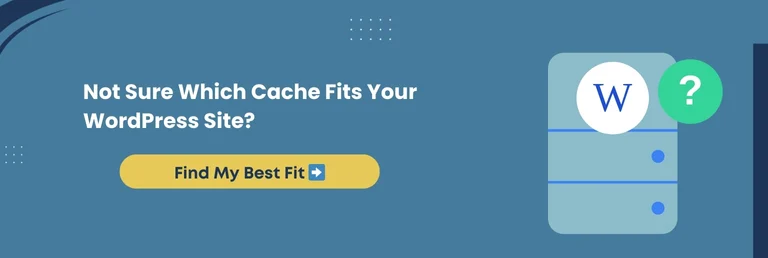
Best WordPress Object Cache Plugins In 2025
Plugins make object caching accessible to website owners who may not want to configure caching manually. The WordPress ecosystem offers reliable drop-in solutions and plugin-based options that fit diverse business needs.
Here is a visual breakdown of the leading plugins comparison.
| Plugin | Best For | Key Features | Pros | Cons |
| Redis Object Cache (Drop-In) | High-traffic and enterprise sites | Persistent caching, clustering support, server-level integration | Fast, trustworthy, scales easily, widely supported | Requires server configuration and technical knowledge |
| W3 Total Cache | Complex WordPress websites needing all-in-one optimization | Object caching, page caching, database caching, CDN integration | Feature-rich, flexible, widely used | Setup can overwhelm beginners; advanced tuning is required |
| LiteSpeed Cache | Sites hosted on LiteSpeed servers | Full-page and object caching, image optimization, CDN support | Extremely quick on LiteSpeed, strong plugin ecosystem | Limited to LiteSpeed hosting environments |
| APCu Manager | Small to medium single-server websites | In-PHP caching, low overhead | Lightweight, budget-friendly, user-friendly setup | Not persistent across servers, unsuitable for enterprise or clusters |
Quick Recap: The best WordPress object cache plugins in 2025 include Redis Object Cache for enterprise use, W3 Total Cache for all-in-one optimization, LiteSpeed Cache for specialized hosting, and APCu for simple setups.
If you find this helpful, we have something of similar interest for you. Do checkout our another blog on Top Selling and Trending WordPress Plugins in 2025.
Step-by-Step Implementation For WordPress Object Caching
A successful object caching setup begins with preparation, followed by correct configuration, and finally testing to validate results. This section walks you through the process with practical steps that anyone can follow.
Step 1: Pre-Implementation Audit
Before enabling object caching, perform a readiness check to ensure your hosting environment and WordPress setup can support it. For that,
- Use WPeople’s Object Cache Readiness Checker to confirm compatibility.
- Review server requirements, including PHP version, database support, and memory availability.
- Create a backup of your WordPress website to protect against unexpected issues.
- Define a rollback strategy in case plugin conflicts or hosting restrictions appear.
Step 2: Redis Implementation Walkthrough
Redis is a prominent option for persistent object caching in WordPress.
- Install Redis on your hosting environment. Most managed hosts provide direct instructions or pre-built Redis support.
- Update the wp-config.php file with Redis connection details to enable integration.
- Activate a Redis object cache plugin such as the official Redis Object Cache or W3 Total Cache.
- Apply plugin configurations to optimize performance and security. It ensures only trusted users can access Redis.
- Use code snippets such as wp_cache_set() and wp_cache_get() to confirm caching is working in your environment.
Step 3: Testing and Validation
- Once Redis or another cache solution is enabled, verify the results by:
- Running performance improvement benchmarks using tools such as GTmetrix, WebPageTest, or Lighthouse.
- Monitoring cache hit ratio in Redis to confirm that queries are being served from memory rather than the database.
- Setting up monitoring alerts to catch cache failures early.
- Troubleshooting common concerns, such as cache not persisting across reloads or plugin conflicts.
The Bottom Line: Proper implementation involves auditing your environment, configuring Redis or another caching solution, and validating results through testing. With these steps, WordPress object caching becomes reliable, future-ready, and performance-driven.
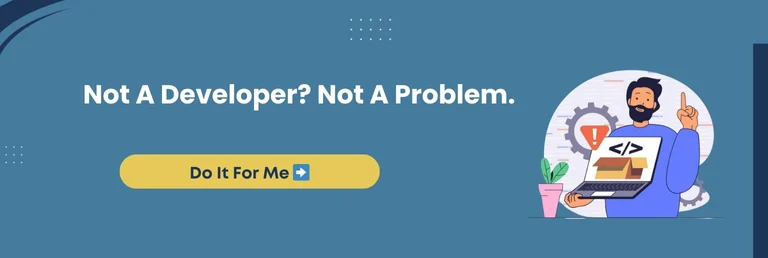
Advanced WordPress Object Caching Strategies
Basic caching can dramatically improve performance. However, modern strategies open the door to next-level speed, stability, and scalability. Mastering these methods is paramount for websites with complex architectures, millions of users, or high-value transactions.
Here are some proven techniques that take caching to the next level.
Cache Warming WordPress Strategies
Cache warming involves preloading important pages or objects into memory before users request them, similar to WordPress cron job automation for scheduled tasks. It eliminates the “cold start” effect, where visitors hit uncached data.
Preloading product pages, category pages, and checkout flows ensures more rapid delivery during peak hours.
Selective Cache Invalidation
Instead of flushing the entire cache, selective invalidation clears only the outdated parts of the website. For example, updating a product price should refresh only the product page cache, leaving the rest of the website untouched and lightweight.
Multi-Tier Caching Architecture
High-traffic websites often combine object caching with page, database, and CDN caching. This layered approach creates multiple checkpoints for performance. It reduces strain on servers and improves response times globally.
CDN Integration Strategies
Integrating a content delivery network with object caching extends performance benefits across geographic regions. Cached data is served from the nearest edge server. It minimizes latency for international audiences and delivers a consistent user experience.
Custom Object Caching for Complex Plugins like ACF
Plugins such as WooCommerce and LearnDash generate dynamic queries that can create latency on websites.
Custom plugin development ensures frequently accessed data, such as cart sessions or course progress, is stored efficiently through object caching It reduces query load while keeping functionality intact.
➡️Possible Use Case: Scaling For 10M+ Pageviews
Advanced caching strategies can be a decisive factor for publishers or SaaS platforms managing millions of Pageviews between downtime and seamless scalability.
Combining selective invalidation, cache warming, and CDN integration helps these websites stay well-balanced and profitable even under extreme loads.
Core Insight: Advanced object caching strategies such as cache warming, selective invalidation, multi-tier architecture, and custom caching enable WordPress websites to handle large-scale growth, maintain stability, and consistently deliver fast user experiences.
Troubleshooting And Optimization of WordPress Object Caching
Even with the best setup, object caching in WordPress can encounter issues that slow down performance or create conflicts. Troubleshooting and fine-tuning ensure that caching works as intended, delivers consistent results, and avoids unwanted surprises.
Common Challenges And How To Address Them
Caching Issues
When caching fails, pages may load slowly or not at all. Standard causes include misconfigured plugins, insufficient server memory, or expired connections to Redis or Memcached.
- Reviewing error logs and testing plugins individually often reveals the root problem (origin).
Plugin Conflicts
Some caching plugins overlap in functionality, creating redundancy or clashes. Running multiple caching solutions simultaneously may unnecessarily delete caches or override settings.
- The solution is to deactivate overlapping plugins and rely on a single, well-optimized caching layer.
Memory Leaks and Cache Stampede Prevention
Improper memory allocation can lead to leaks where cached data is not correctly cleared. Tools like Redis monitoring dashboards help track usage and identify issues. Cache stampedes occur when multiple requests query the database at once after cache expiration.
- Prevention methods include staggered cache refreshing and cache locking techniques.
➡️What You Should Know
Redis and Memcached can expose sensitive data if left unsecured. Restrict access to trusted IP addresses, use strong authentication, and configure firewalls to guard cache servers. Managed hosting providers often include these safeguards by default.
➡️Note: Not all hosting providers wholly support object caching. While leading managed hosts offer Redis or Memcached integration, some budget plans exclude it. Hence, confirm before implementing whether your host provides object caching support or allows custom installation.
Knowledge Drop: Effective troubleshooting involves checking plugin conflicts, monitoring memory usage, securing cache servers, and confirming hosting compatibility. With the accurate optimization, object caching remains reliable, safe, and future-proof for WordPress websites.
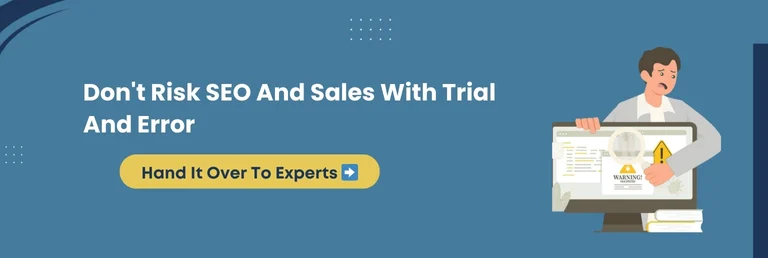
ROI And Business Impact Of Object Caching
Object caching is a long-term growth asset that helps businesses thrive in an environment where every second counts. Speed influences everything from conversions to brand trust, and caching ensures that your WordPress website remains quick, scalable, and ready for what comes next.
Let’s explore how object caching delivers measurable impact.
Future-Proofing Digital Growth
Search engines are becoming more demanding, with Google’s Core Web Vitals and AI-driven ranking systems increasingly prioritizing site speed through WordPress performance optimization services. Websites that ignore the caching risk lower search visibility. In contrast, those who invest early position themselves for lasting visibility and authority.
Beyond Revenue and Conversions
The impact of object caching extends beyond the checkout improvements. Lightning-fast performance reduces customer frustration, lowers refund requests, and strengthens loyalty.
Teams also spend less time firefighting server slowdowns, freeing WordPress development teams to focus on innovation rather than maintenance.
Scalable Stability for High-Traffic Growth
Imagine your website growing from 5,000 to 50,000 daily visitors. Yes, you can achieve such tempting targets with persistent caching and WordPress migration services for scalable hosting It enables resources to handle the surge smoothly, turning growth into an opportunity instead of a liability.
Without caching, hosting costs skyrocket, servers crash, and users leave the website.
Hidden ROI Many Businesses Overlook
- Employee Efficiency: Developers spend fewer hours troubleshooting performance bottlenecks.
- Customer Trust: Visitors relate blazing-fast websites with trustworthy businesses. It fosters long-term brand value.
- Market Opportunities: Quicker, more reliable sites are more attractive to partners, advertisers, and marketplaces.
➡️Here is my personalized ROI perspective: If your website generates around $50,000 in monthly revenue, cutting down just two seconds off load times can increase annual sales by up to 20%. And that does not factor in improved SEO rankings; it lowers server bills and increases repeat customers.
Key Takeaway: Object caching delivers ROI that compounds over time, from higher conversions and SEO gains to stronger loyalty, reduced costs, and competitive advantage. For forward-looking businesses, it is a growth multiplier that pays dividends long after the setup.
When To Call The Experts For Object Caching
Object caching can significantly improve WordPress performance. However, not every business has the technical proficiency, time, or resources to implement it correctly.
At some point, the complexity of managing caching solutions, avoiding conflicts, and ensuring long-term stability requires professional intervention. We will discuss the vital aspects to consider when seeking an expert.
Red Flags That Mean You Need Professional Help
- Persistent slowdowns even after enabling caching
- Frequent website crashes or downtime during traffic spikes
- Security vulnerabilities with Redis or Memcached
- Complex integrations with WooCommerce, SaaS, or learning platforms
A Visual Comparison of DIY vs. Professional Object Caching Cost Analysis
| Factor | DIY Implementation | Professional Implementation |
| Upfront Costs | Low, usually limited to free or low-cost plugins | Moderate to high, depending on scope and provider |
| Time Investment | High, requires research, setup, and troubleshooting | Low, experts handle setup, monitoring, and optimization |
| Risk Level | Higher risk of misconfiguration, downtime, or data loss | Minimal risk, tested processes, and secure best practices |
| Performance Results | Inconsistent, depends on technical skill, and trial-and-error | Reliable, benchmarked improvements backed by expertise |
| Hidden Costs | Downtime, lost sales, SEO penalties, and higher server bills | Transparent pricing with predictable ROI and fewer hidden risks |
| Scalability | Limited, may struggle under high traffic or complex sites | Built for growth, handles eCommerce, SaaS, and publishers |
| Long-Term Value | Short-term savings, but with potential costly mistakes | Long-term gains in speed, stability, SEO, and customer trust |
While do-it-yourself setups may appear cost-effective, hidden costs often pile up. Misconfigurations can lead to downtime, poor SEO performance, and higher server bills. Professional implementation provides a structured setup, testing, and monitoring that offset these risks.
➡️WPeople’s Object Caching Implementation Package
WPeople offers customized caching services for future-ready businesses. From pre-implementation audits to Redis configuration, plugin optimization, and long-term monitoring, our plans ensure WordPress websites perform at maximum efficiency with minimal hassle.
➡️Pro Tip: If your website shows any red flags or you aim to scale, professional help ensures your investment in caching pays off.
Final Thought: Calling the experts ensures caching is implemented securely, efficiently, and strategically. It will save you from costly mistakes and ensure your website performs at its peak without risking downtime or lost revenue.

Conclusion
Website performance is the foundation of online success. Object caching equips WordPress websites with exceptional speed, stability, and scalability needed to thrive in a digital world where every second matters.
From reducing database load to boosting SEO rankings and supporting growth at scale, caching proves its value across every dimension of business performance.
Throughout this guide, we explored what object caching is, its significance, and how to implement it using tools such as Redis, Memcached, APCu, and cloud solutions.
We also discovered advanced strategies, troubleshooting tips, and real-world business impacts that show how caching transforms websites into faster, more profitable platforms.
If you are ready to move from slow, unpredictable performance to a WordPress site built for speed and growth, professional support makes all the difference.
At WPeople, our WordPress specialists have helped e-commerce brands, SaaS providers, and publishers achieve lasting performance gains with proven methods and measurable outcomes.
➡️The next step is yours. Whether you want to safeguard SEO rankings, reduce server costs, or capture more sales, persistent object caching is the key to turning your WordPress website into a competitive advantage.
FAQ
How Much Faster Will Object Caching Make My WordPress Site?
Object caching can improve WordPress speed by 50 to 80 %. For example, WPeople reduced one client’s load time from double-digit to under single-digit seconds, proving how object caching speeds up WordPress websites dramatically.
Is Object Caching Safe For My WordPress Site?
Yes, when configured securely. Use authentication for Redis or Memcached, restrict access to trusted IPs, and update plugins regularly. WordPress object cache security considerations are minimal with these safeguards.
How Much Does Professional Object Caching Implementation Cost?
Professional implementation typically ranges from $500 to $5,000, depending on website complexity. Transparent pricing enables businesses to plan investments, and most recover costs quickly through improved conversions and server savings.
Can I Implement Object Caching Without Technical Knowledge?
Yes, you can enable object caching in WordPress without plugin conflicts by using user-friendly plugins like W3 Total Cache. Professional help is recommended for advanced setups like Redis to avoid errors and maximize results.
Which Hosting Providers Support Object Caching?
Leading providers such as WP Engine, Kinsta, Cloudways, and SiteGround offer object cache WordPress hosting compatibility. If migrating from another platform, check our platform migration guide for caching setup. Check with your host, since some entry-level shared plans do not support persistent caching.
What’s The Difference Between Redis And Memcached For WordPress?
Redis supports persistence, clustering, and monitoring, making it best for high-traffic or enterprise websites. Memcached is faster for lightweight workloads but lacks Redis’s advanced features. WordPress Memcached vs Redis performance comparisons favor Redis for scalability.
How Do I Enable WordPress Object Cache On My Site?
Install a plugin such as Redis Object Cache or W3 Total Cache to enable object caching. After that, you can configure the wp-config.php file with your server details and validate the results. It is the simplest way to switch on object caching in WordPress.
What Are The Best WordPress Object Cache Plugins In 2025?
The best WordPress object cache plugin options include Redis Object Cache for enterprises, W3 Total Cache for all-in-one optimization, LiteSpeed Cache for LiteSpeed servers, and APCu Manager for budget-friendly setups. For page builder performance comparison, consider editor-specific optimizations.
How Much Memory Does WordPress Object Caching Require?
WordPress object cache memory requirements may vary by website size. Small blogs may run with 64MB, while high-traffic e-commerce or SaaS websites often need 256MB or more to maintain consistent speed and stability.
How Do I Troubleshoot WordPress Object Cache Issues?
Check for plugin conflicts, misconfigured wp-config.php entries, or insufficient server memory. Use Redis or Memcached monitoring tools to review cache hit ratios. If issues persist, clean the cache and retest performance improvements.

